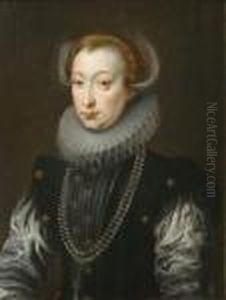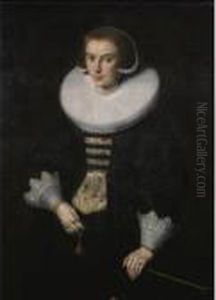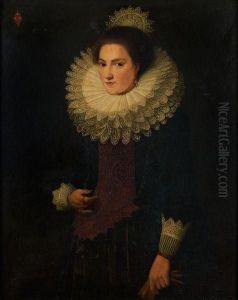Jan Anthonisz Van Ravensteyn Paintings
Jan Anthonisz van Ravensteyn was a Dutch portrait painter who played a notable role in the development of portrait art during the Dutch Golden Age. Born around 1570 in The Hague, his exact birthdate remains uncertain, but he was active as a painter from the late 16th century until his death in 1657. Not much is known about his early life or his training, but his work suggests that he was influenced by the Haarlem portraitists and may have been associated with the workshop of Michiel Jansz van Mierevelt, another prominent Dutch portraitist of the time.
Van Ravensteyn's oeuvre primarily consists of individual and group portraits, many of which depict military officers and high-ranking officials. He was particularly skilled in rendering the textures and materials of his sitters' clothing, capturing the intricate details of lace, fabric, and armor with precision and care. This attention to detail and his ability to convey the social stature and personality of his sitters made him a sought-after portraitist among the Dutch elite.
Despite his success as a portraitist, there is little documentation about van Ravensteyn's life. He became a member of the painters' confraternity in The Hague, known as the Guild of Saint Luke, in 1598 and later served as its headman in 1628 and 1638. His presence in The Hague throughout his career suggests he was well-established and respected within the local artistic community.
Van Ravensteyn's portraits are characterized by a certain solemnity and often feature a dark palette, which was typical of Dutch portraiture at the time. His works are noted for their meticulous execution and for the dignified representation of his subjects. Though overshadowed by some of his contemporaries, van Ravensteyn's contribution to Dutch portraiture is significant, and his paintings can be found in various museums and collections around the world, including the Mauritshuis in The Hague and the Rijksmuseum in Amsterdam.
Jan Anthonisz van Ravensteyn died in 1657 in The Hague. His legacy continued through the work of his pupils and followers who carried on the tradition of Dutch portraiture into the latter half of the 17th century.


